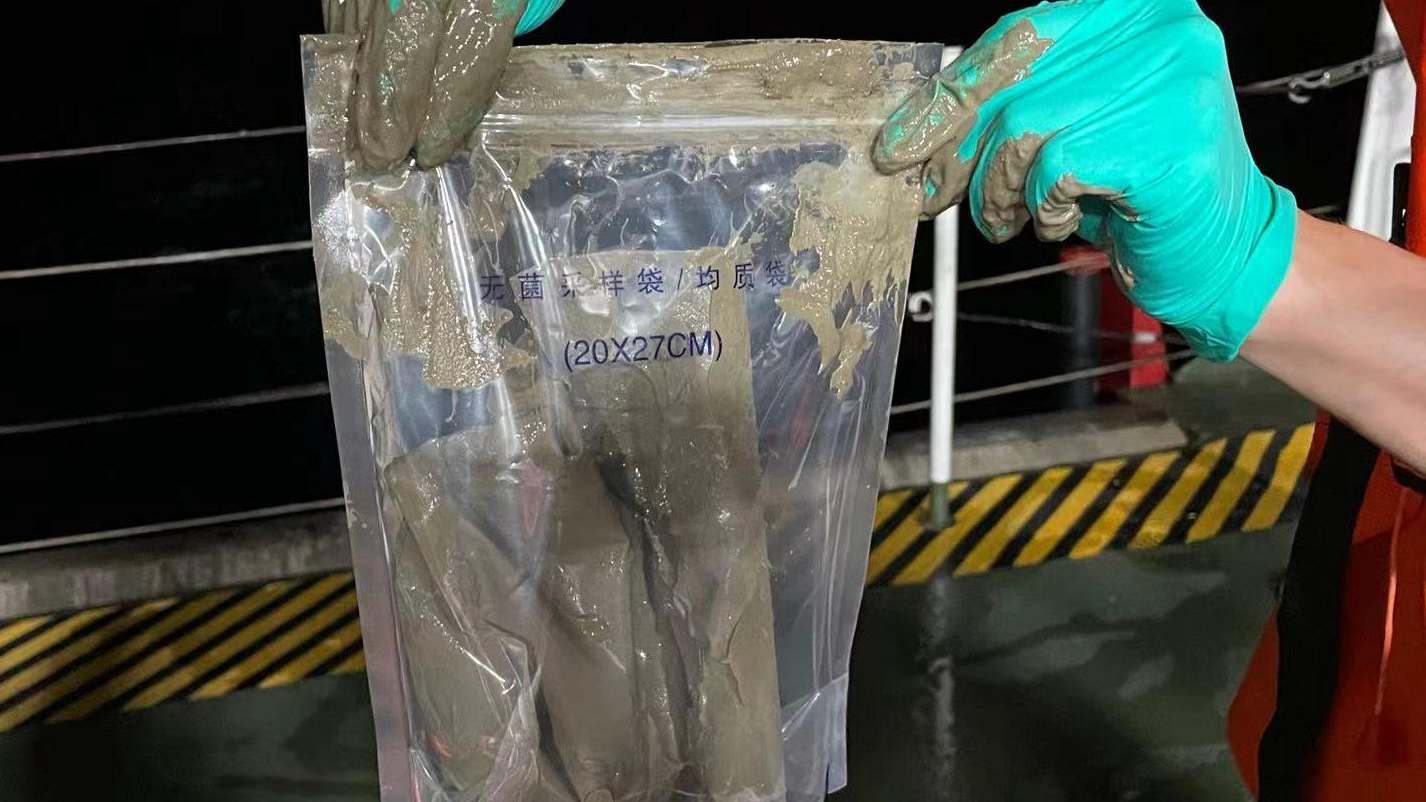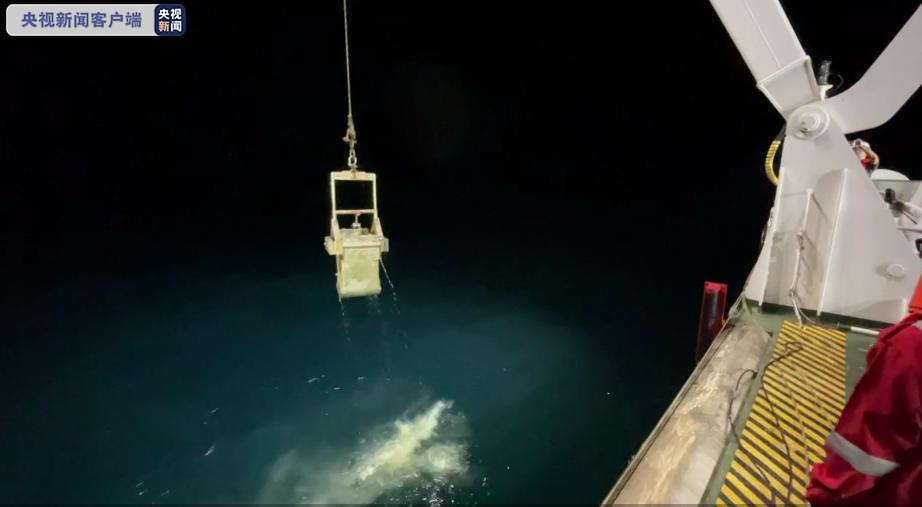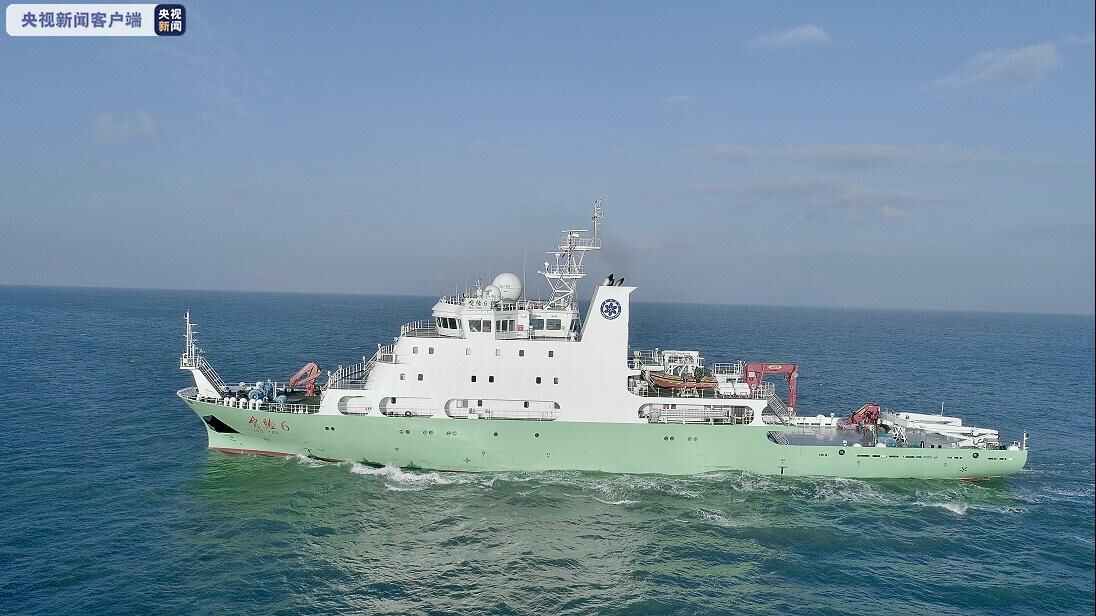
A bag of mud sample collected by China's scientific research vessel Shiyan 6, September 6, 2021. /China Media Group
A bag of mud sample collected by China's scientific research vessel Shiyan 6, September 6, 2021. /China Media Group
A Chinese scientific research vessel Shiyan 6 (Experiment 6) began its maiden voyage from the Xinzhou wharf in Guangzhou, south China's Guangdong Province, on Monday morning to a Pearl River estuary in the province and then onward to the northern area of the South China Sea to conduct multi-disciplinary scientific tasks.

China's scientific research vessel Shiyan 6 collects samples at its first research site, September 6, 2021. /China Media Group
China's scientific research vessel Shiyan 6 collects samples at its first research site, September 6, 2021. /China Media Group
The vessel arrived at the first research site at 7:10 p.m. on Monday. It collected water and mud samples, which will be analyzed at a land-based laboratory.
Shiyan 6, delivered by China State Shipbuilding Co., Ltd. in December 2020, is the country's first medium-sized comprehensive research vessel that focuses on geophysical exploration.
With a total investment of over 500 million yuan (about $77 million), the vessel is 90.6 meters long, 17 meters wide and 8 meters deep. It can carry a 60-member crew for 60 days at sea with a cruising endurance of 12,000 nautical miles.

China's scientific research vessel Shiyan 6. /China Media Group
China's scientific research vessel Shiyan 6. /China Media Group
It is hailed as one of the main forces of China's 3,000-tonne vessels for deep-ocean scientific research.
The ship harbors a laboratory area of more than 330 square meters and research auxiliary area of over 470 square meters. Its open operation deck area is more than 600 square meters, competent to a 4,000-tonne research ship.
Led by Du Yan, deputy director of South China Sea Institute of Oceanology under the Chinese Academy of Sciences, the 60-member team will study hydrological dynamics, material transport and ecological response processes in the Guangdong-Hong Kong-Macao Greater Bay Area and adjacent waters.
Du said multiple advanced equipment will be used to conduct 11 scientific research tasks covering physical oceanography, marine geology and marine ecology, and obtain samples and data of water bodies and sediment at different depths.

